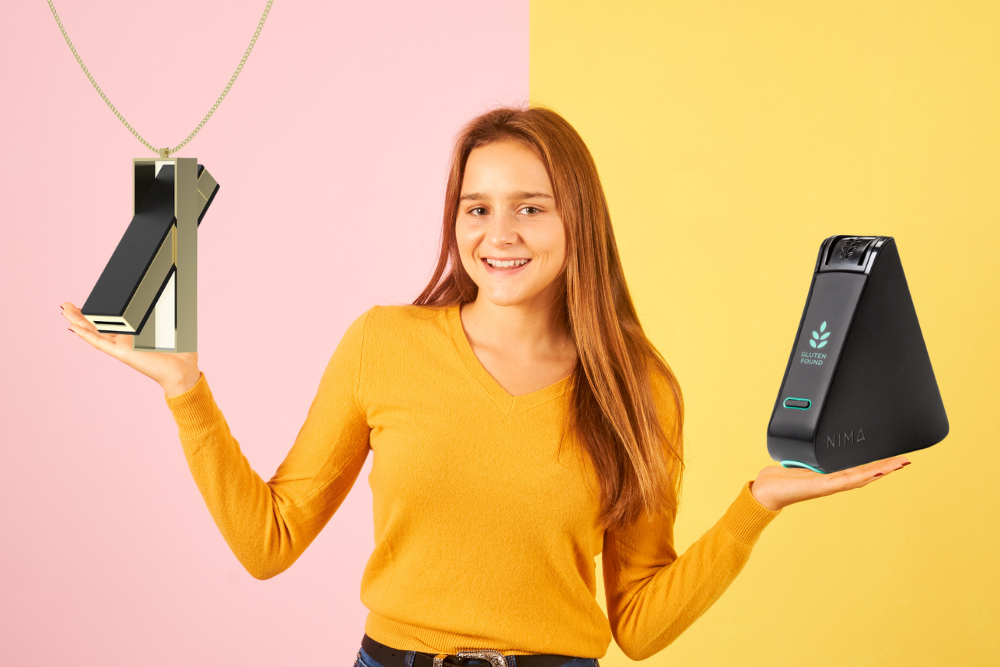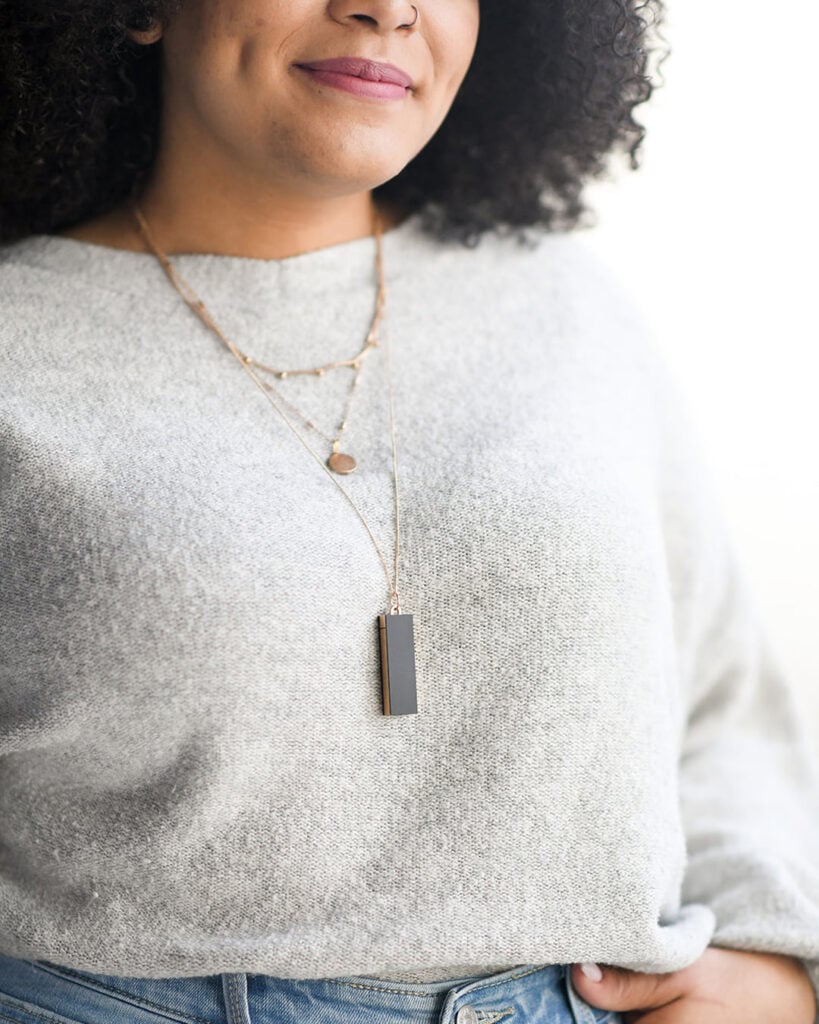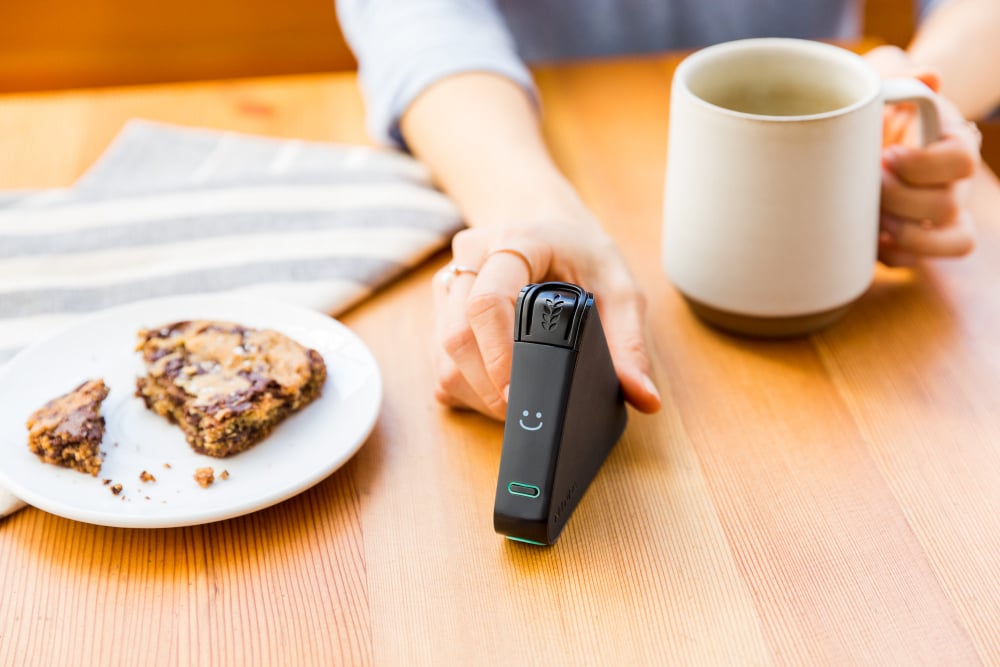
I’m a nutritionist specializing in celiac disease and gluten disorders, and I’ve been using Nima Sensor for a long time.
And while I’ve loved using it over the years, you should know a few things about this device before you invest in one, especially because the device has some loud critics within the gluten-free community.
Chances are, even if you love your Nima Sensor, some negative Nancy will try to distract you from using it.
Unfortunately, you’ll have to endure such ire judgment for simply using a device that will enhance your life and keep you compliant with your gluten-free diet.
I’ve listened to the critics over the past 4-5 years, and none have made a compelling enough case against it.
That’s why you’ll find that I defend Nima, use it on occasion, and even share my test results exclusively with my community. [Join my community HERE to see my weekly tests.]
Before you invest in a Nima Sensor, I want to tell you what the critics will say and arm you with responses that will rebuff even their harshest critiques.
For a more detailed explanation of each critique, read my article, What You Need to Know About Nima Sensor Before You Buy, which is my most comprehensive article on Nima Sensor.
Criticism #1: Nima Is Too Accurate
The gluten-free community says the device is too accurate, mainly because it can detect gluten under 20 parts per million, the gluten threshold set by the FDA.
If the device is too accurate, some critics say it could lead to false positives, causing the community to unnecessarily avoid products that would otherwise be considered gluten-free.
For example, if a product contained 18 ppm of gluten, Nima might reveal a “Gluten Found” message. Nima’s critics say that a product with 18 ppm of gluten is safe for people with celiac disease based on science. Some people feel differently.
The Rebuttal: The fact that Nima is “too accurate” is a valid criticism, but it’s important to understand that some people get sicker than others at the tiniest crumb of gluten.
To put everyone in the same box as to what they feel safe and comfortable eating is a mistake.
Some people must be hypervigilant (e.g., zero gluten tolerance), while others are okay eating foods that meet the 20 ppm threshold.
Everyone must decide for themselves whether or not they’re comfortable with foods below the 20 ppm threshold.
I suggest you read more about how the FDA set the 20 ppm threshold in my article, Is the FDA’s 20 ppm Gluten Threshold Enough? to become educated on the debate about how much gluten is too much gluten.
Criticism #2: Testing Is Too Complicated for the General Public
When an influencer tested McDonald’s French fries for hidden gluten using her Nima Sensor, the gluten-free community was up in arms. McDonald’s French fries contain hydrolyzed wheat, one of the foods Nima (and no commercial testing lab) can detect.
Nima says in its user manual that you must read ingredient lists first due to this limitation in testing.
However, some critics were foaming at their mouths to bash Nima because this honest mistake proved the critics right: The general public cannot [always] be trusted to use this powerful device properly.
One of the critics is the Canadian Celiac Association. The organization says the gluten-free community isn’t intelligent enough to use this device properly because “gluten testing is a complex process.”
The CCA says the community should instead rely on asking questions about the food ingredients, preparation, and serving procedures, and these processes will sufficiently protect them.
The Rebuttal: The gluten-free community needs to absolutely ask questions about food and read food labels, but they also get duped often.
In fact, one in three restaurant meals contains hidden gluten. And haven’t you been accidentally glutened despite your best efforts to get a safe meal? I guess knowledge and skills can only get the gluten-free community so far.
With a little education, Nima isn’t that hard to use. Remember when doctors were against women taking at-home pregnancy tests, with some doctors citing that women have a hard time following relatively easy instructions?
The author of this New York Times article on this topic appropriately said this was just the beginning of the “social and political forces that can keep even trusted and easy-to-use medical tools out of the hands of patients.”
Nima is a breakthrough product that provides important data at your fingertips when you need it. The forces keeping this easy-to-use device out of your hands may have other motives.
Criticism #3: Nima Only Tests a Small Sample of Food
Some critics say that it shouldn’t be trusted because Nima can only test a small piece of food for hidden gluten. Way to throw out the baby with the bathwater!
The Rebuttal: The truth is, you cannot place your entire meal in a testing device or within the hands of a lab because you’d have nothing left to eat.
But if you test a small piece of the food, whether from a package or a restaurant meal, the Nima result is likely indicative of the whole meal.
Yes, there can be hot spots of gluten that Nima didn’t find, but come on, commonsense says it’s pretty darn close to decoding what’s in your food beyond what the eye can see.
One of the loudest critics of Nima is The Gluten-Free Watchdog. The site’s owner advocates for the gluten-free community and calls out companies getting gluten-free wrong. Her subscription service is a competitor to Nima.
The Gluten-Free Watchdog sends various foods to a full-on ELISA testing lab, then she sells the test results to her community each month for a fee. While helpful, such tests say nothing about the food placed before me.
I’ve always wondered why the gluten-free community isn’t upset about these tests, given that people make real-life decisions on what to eat based on The Gluten-Free Watchdog’s findings.
Criticism #4: Nima Displays Too Many False Positives
I have experienced several false positives in my 8+ years of using the device. They typically occur when testing powdered foods (i.e. this mac and cheese packet), brightly colored foods (i.e. cumin and Tajin spices), or dense or thick foods. I also received a true false positive when testing this sprouted bread.
The Rebuttal: This is a genuine criticism of the device and one limitation that bothers me the most. If I’m going to avoid a product based on my Nima’s performance, I need it to be more reliably detect gluten even in foods that are powdery or brightly colored.
Be sure to dilute powdery, brightly colored, and thick/dense test samples with water per Nima’s User Manual to prevent false positives.
If investing in this device, make sure you know that false positives are possible, especially in the foods listed above, and that you might be avoiding a product that is indeed gluten-free and safe.
Other Testing Options
Now that you’re armed with the information you need to more confidently use Nima and other gluten-detecting devices, it’s time to decide if Nima, or another device, is right for you.
While the Nima Sensor is the only gluten-detecting device the gluten-free community currently has at its fingertips, except for a gluten-detecting dog, which also could be deemed “too accurate” since a gluten-sniffing dog can’t distinguish between 10 ppm of gluten and 100 ppm of gluten, there is another device coming to market in 2023 called the Allergy Amulet.

Like Nima, the Allergy Amulet requires you to buy the device, which is $299. This is a one-time purchase. Also, like Nima, the Allergy Amulet requires you to buy single-use test capsules. An eight-pack sampler is $29.99, which comes to about $3.75 per test.
In contrast, a Nima device costs $219, and six single-use test capsules cost $39.99. This comes to $6.67 per test.

One thing I like about the Allergy Amulet is that it’s a wearable device. You can wear it as a bracelet, necklace, or keychain, making it easier to take wherever you go.
While I haven’t had a chance to try the Allergy Amulet, I imagine it has the same limitations as Nima, and will eventually stir the ire judgment of the gluten-free community.
It’s only a matter of time before vocal critics of Nima begin to make pronouncements of why they don’t recommend the Allergy Amulet or why they won’t use it. And the cycle of judgment starts anew.
At least now you’re armed with information to combat the smear campaigns lobbed against gluten-detecting devices.
Should You Invest in a Gluten-Detecting Device?
If you’ve followed me and my blog over the years, you know I take a commonsense approach to living a gluten-free lifestyle. Not everything is black or white; everyone in this community is different and reacts differently to even a tiny amount of gluten.
But if you ask me, every person on a gluten-free diet needs a gluten-detecting device. You won’t need it all the time, and I don’t recommend using it to test EVERYTHING. In fact, I rarely test food at restaurants anymore because it gives me anxiety.
However, when a “gluten-free” burger bun looks too good to be true, or when I swear that box of cereal made me sick, I love having this device that will tell me, with 96.9% accuracy that the food placed before me is really gluten-free.
Before investing in one of these devices, which is a hefty investment, do your research. You may decide Nima is right for you. Or maybe you want to wait and see what people say about the Allergy Amulet when it comes to market.
And if you need a gluten-detecting device now, Nima Sensor is tried and true. It’s been around for many years, although Nima went out of business temporarily in 2020 when the founders sold the business to Medline. The company has rebranded as Nima Partners.
Learn more about Nima Sensor at nimapartners.com, and the Allergy Amulet at allergyamulet.com.
Please note that I have no connection to Nima. Years ago, I worked with the original owners. But I do not work with the current leadership nor have a relationship with the company. I simply believe in the device and always strive to seek truth and share perspective with my readers.
Leave a Comment